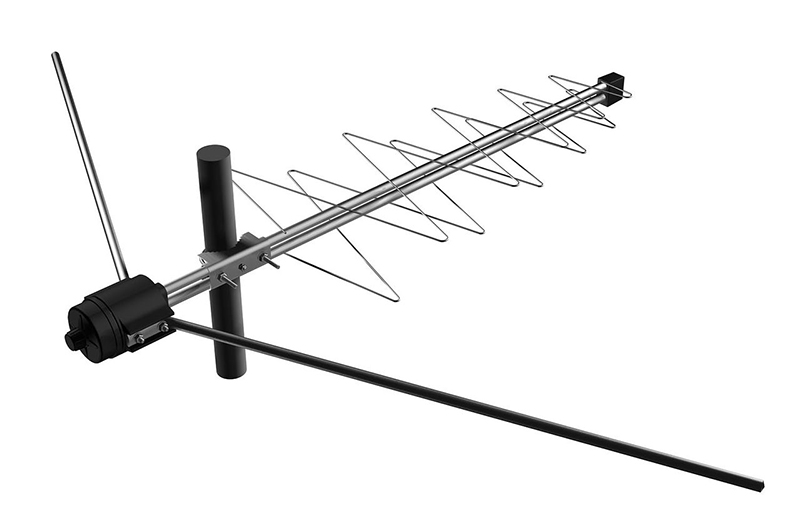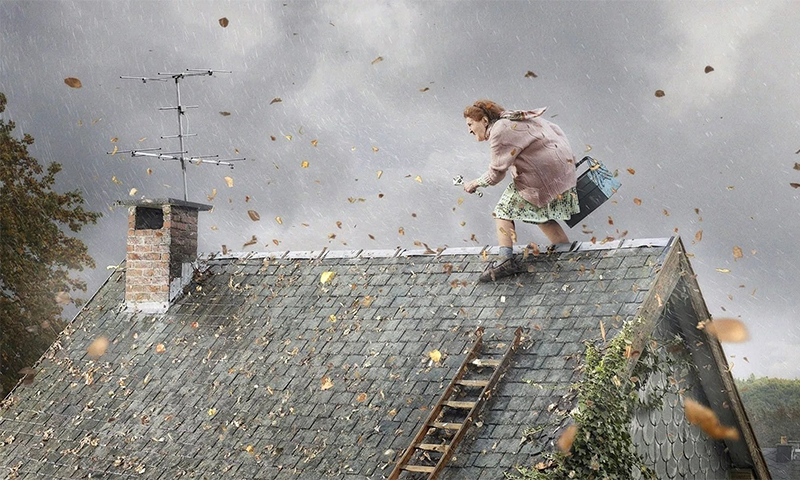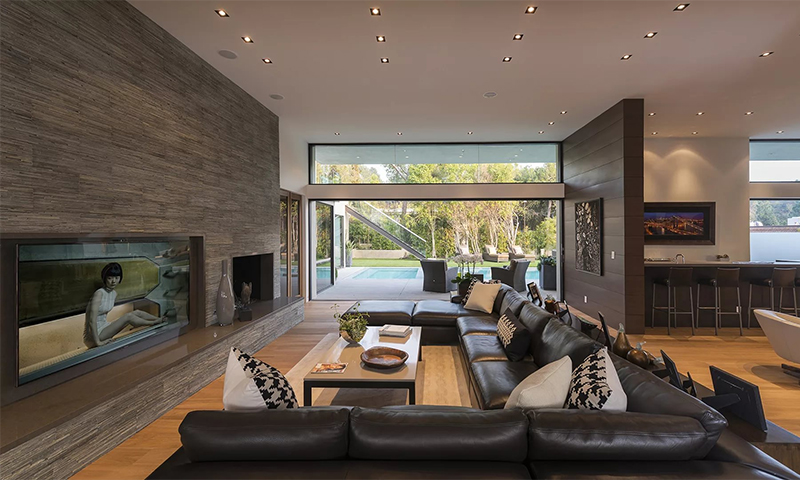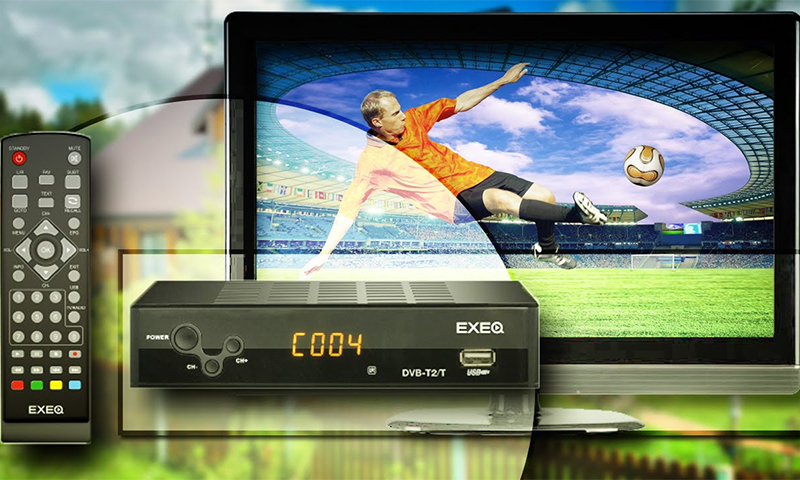In high-rise buildings and urban areas, there are always providers that provide television broadcasting by cable. It is enough to pay for the connection and connect the wire to the tuner so that tens or hundreds of channels are available. But in the country things are different. In the suburbs, it is not profitable to lay cable or it costs a lot, so the way out is to install your own antenna. Which model to choose so that it receives a good signal depends on a number of circumstances, which are described in this article.

Content:
The best manufacturers of antennas for giving - which company to choose
To quickly organize the broadcast of television programs in the country you can buy the products of one of the well-known companies in the industry.
These include:
- DENN;
- BBK;
- Vivanco;
- Rolsen;
- "Remo".
These are the most popular companies in the field of television and radio equipment. But some models have significant differences in the application, so we recommend to study their review.
In order to understand everything on our own, and choose the antenna to give, taking into account all the terrain features and preferences by channels, we continue to read further.
The principle of operation and device antenna

Television stations broadcast using radio transmitters that convert electrical oscillations into electromagnetic waves. This allows them to spread over a very long distance and reach end users.
To extend the signal, repeaters are used that maintain the strength of the wave and increase its radius of action.
So that consumers can take advantage of this, it is necessary to catch and transform electromagnetic waves back into vibrations, which is done with an antenna. The latter has special metal elements, which, being bare, well feel the magnetic fields.
This design captures the signal and transmits it via cable to the tuner, where it is converted into electrical oscillations and reproduced as an image and sound of a specific channel.
Other antenna models do not receive the signal from the towers, but directly from the satellite. To do this, use a huge metal plate and a number of other elements for processing. This allows you to catch well channels even in remote areas or forests.
Country antennas replace the services of providers in the city and help you enjoy your favorite programs in a country house, regardless of its degree of remoteness.
To do this, the device is placed in the house, most often on the window, outer wall or high mast, placed on top of the roof. Some models need to be clearly directed towards the TV tower, while others catch all signals passing by and are omnidirectional.
The antennas vary in shape. There are the following types of antennas:
1. Vertical;
2. Horizontal;
3. Round;
4. In the form of a butterfly.
Their use covers installation in cottages, cottages, houses in the forest and high-rise buildings.
The antenna device includes:
1. Central strip;
2. Mast clamp;
3. Vertical and horizontal elements for increased sensitivity;
4. Antenna box with terminals;
5. Amplifier;
6. Mirror;
7. Converter;
8. Vibrator.
Types of country antennas
Satellite

They have a large body with a metal disc, which effectively reflects the waves and redirects them to the feed with a convector. Then the signal goes to the tuner and to the TV.
The difference between these antennas is the reception of a signal directly from the satellite, where the trajectory excludes the passage of forests, buildings, mountains and other obstacles.This is especially practical in a remote from civilization structure and highly uneven terrain.
Advantages:
- high image quality;
- good sound;
- a wide variety of channels;
- the ability to catch foreign language learning programs;
- viewing the broadcast schedule directly on the screen.
Disadvantages:
- cost is higher;
- more expensive maintenance in case of breakage;
- signal quality deteriorates in heavy snow.
Essential

Simple models that work with the signal from the TV tower or repeater. Subdivided into analog and digital, where there is a different range of sensitivity and, as a result, differences in image quality.
Suitable for periodic or permanent use in the country, not very remote from the city (up to 30-80 km).
Advantages:
- less weight;
- simple installation;
- cheap;
- there are models with an amplifier;
- frequency diversity;
- able to catch digital signals;
- there are collective models.
Disadvantages:
- amplifiers in the case often break;
- device may deteriorate due to wind;
- signal quality is strongly influenced by weather conditions;
- to catch different channels you have to change the direction of the device.
Parameters for selecting the antenna to give

Number of work items
Electromagnetic waves are trapped by exposed metal parts. This can even occur on the cleaned wire directed towards the TV tower. The more metal bars on the antenna, the better it will be able to capture the transmission and the more stable the image will be on the TV.
The number of elements in the device can vary from 2 to 62. The farther away the cottage from the repeater, the more sensitive details are needed to recognize the signal.
1. If the house is built just outside the city (up to 10 km), then you can choose among simple models for 8-20 elements.
2. Within a radius of 30 km to catch the transfer will turn on the antenna with 30-50 vibrators and small jumpers.
3. With greater distance, use devices for 55-62 elements.
Wind load
In the case of outdoor installation on the roof or wall, it is important to choose a model with sufficient wind load. It is displayed in two values: the wind speed, at which the antenna will keep normally, and the speed of destruction, when the device is broken.
1. In the village located in a lowland, where strong wind rarely rises, the antenna with a normal load of 20 m / s and a maximum of 40 m / s is sufficient.
2. At higher elevations, the wind force is much higher, so a construction designed for 25–30 m / s is required during normal operation and a failure indicator of 50 m / s. This will keep the fixture whole and save money.
Frequency range
The main purpose of the antenna for giving is to catch the signal transmission from the TV towers. Broadcasting of various companies is carried out on its own frequency. The wider the range of the receiving device, the more TV channels will be in the list of available.
1. In Russia, channels 1 to 12 are broadcast with meter waves at a frequency of 49-230 MHz, so fans of such an ether need to make sure that this band is maintained in the purchased product.
2. Channels 21 to 69 are transmitted on decimeter waves with a frequency of 470-862 MHz, but not all models have such a run up and some are limited to 790 MHz, which captures a maximum of the 60th channel from the list.
3. Fans of high-quality image and sound should look for DVB-T2 and DVB-T designations, which will indicate work with a digital signal. Without this parameter, the antenna will only be able to capture an analog signal.
Active or passive
Some antennas can work only due to their own area of metal elements and catch the incoming signal as far as physical laws and existing obstacles within a radius of 30 km allow. Other models have a built-in amplifier and are called active.
Their action makes it possible to amplify a signal weakened due to a large distance and transmit it to a television set at an appropriate level, which allows them to be used even when they are 60–80 km away from the repeater.
Which antenna to choose to give depends on the location of the building and the location of the nearest transponder. If all this is within 30 km, then a sufficiently passive model.
With a greater distance without an amplifier can not do. But it may be required at short distances, if there is a tall building (factory, elevator) between the dacha and the TV tower or when the village is built in a valley. Because of such obstacles, the signal quality drops significantly and it will be necessary to strengthen it.
But buying such a model is worth remembering that, in the case of a street installation, the reinforcement unit will be constantly on the street and exposed to rain, snow and winds. This significantly reduces its service life and will have to be repaired or replaced every few years.
At a short distance it is better to try the work of an analog model, but only in case of a bad image, buy an amplifier separately.
Gain
When the antenna is capable of enhancing the reception of a signal, the coefficient with which it does this plays a big role. The presence of an amplifier module does not yet guarantee that the device will automatically capture all electromagnetic currents well. Depending on the model, the coefficient varies from 2 to 50 dBi.
1. If the dacha is located a little further than the range of the passive models (35-40 km), then it is necessary to look for a device with a figure of 10-20 dBi for each type of wave (meter and decimeter).
2. If the distance is 50-60 km, the possibility of increasing the signal by 25-30 dBi will be required.
3. When the holiday village is very far from the TV tower or the nearest repeater, 36-45 dBi antennas are used.
type of instalation
It is possible to catch electromagnetic waves from various places.
1. If the cottage is located on a hill and there is a direct path to the repeater (without buildings, woods), then the room installation option is suitable, which is easier to maintain and easier to keep whole. In this case, the window and the installed antenna should go to the side of the TV tower.
2. When there is a lot of interference (densely built houses, high fences, an elevator, a hill) or a house is in a lowland, the antenna is carried to the mast and fixed 4-7 meters above the ground, depending on the height of the obstacles.
3. With a close location to the tower and slight interference (high brick fence), you can fix the device on the outer wall, which will increase the sensitivity, but will protect from wind gusts.
Reflector diameter
When using satellite models a large role is played by the diameter of the reflector. It can be 50-150 cm. It is from its size that the possibility of capturing signals from a satellite and their further transfer to the feed with the convector depends.
With good weather, the image is always on top, but in the snow or pouring rain the picture can fall into small squares. There is still a recommended standard for various satellite transmission packages.
1. Fans of satellite quality and diversity of channels from "Tricolor TV" and "NTV Plus" it is important to buy plates with a diameter of 80-90 cm. This is also enough for "Telekart TV" and "Continent TV".
2. It is comfortable to watch programs in any weather from the “NTV Plus Light” or “Rainbow TV” package on a plate of 120 cm or more.
3. It is allowed to work with reflectors 50-60 cm in diameter, but how high the quality in snow will be is difficult to say in theory.
Coating type
Reflectors and some other antenna elements are covered with protective compounds in order to prolong their service life and protect against corrosion.
The following protection methods are commonly used:
1. Galvanizing - more suitable for warm and dry regions.
2. Powder coating - suitable for wet areas with frequent rains.
Radio features
At the dacha you want not only to watch TV in the evening, but also to turn on the music, listen to the weather forecast or news, and all this without being distracted from work. To do this, select the antenna with the ability to capture VHF to broadcast radio stations.
This will relieve the transport of an additional receiver to the country or connect the phone to the loudspeakers. The performance of ultra-short waves is prescribed in the characteristics of the antenna (designation VHF or FM).
Collective models
Happens in the country there are several TVs: in the kitchen and in the bedroom. Often it is the "veterans" transported here after buying a new apartment. To provide them with a television signal they use a collective type of antennas.
It includes many elements and is designed to connect multiple users. This option is convenient for close living relatives, whose cottages are built nearby. The signal from the device can be used on several houses or a small street.
What kind of antenna to choose

1. To periodically watch the news on a pair of channels, there is enough antenna for 16 elements, mast installation, wind load 25 m / s, with a range of 100-230 MHz, without an amplifier.
2. If the house is located in a valley, then you will need equipment from 40-50 elements, with fastening on a mast 5-6 meters high, active action with a gain of 20-30 dBi.
3. When finding a cottage on a hill and the line of sight of a TV tower, there is enough room variant for 8 elements, with an amplifier and a factor of 12-21 dBi. Useful function capture radio VHF in the range 88-108 MHz.
4. To distribute the signal between several TVs or neighbors, a collective model of 10–15 elements with huge parameters of 2200x2900 mm, with a mast installation, wind load of 50 m / s for destruction, meter wave range 49-230 MHz and UHF 470-862 MHz is required.
5. To watch a lot of channels in remote areas far from the city, in high quality from the satellite, put a "plate" with a mirror diameter of 90-100 cm, having a powder coating and wall mount. 37 dBi amplifier.
How much is the antenna to the country

1. For infrequent use in the country fit antenna for 450-700 rubles.
2. To provide a sufficient signal in the lowland, they buy models for 1200-2000 rubles.
3. Room models cost 640-800 rubles.
4. Collective devices are estimated at 2500-3000 rubles.
5. Satellite dishes sell for 1500-6000 rubles.
It will be interesting to friends too








